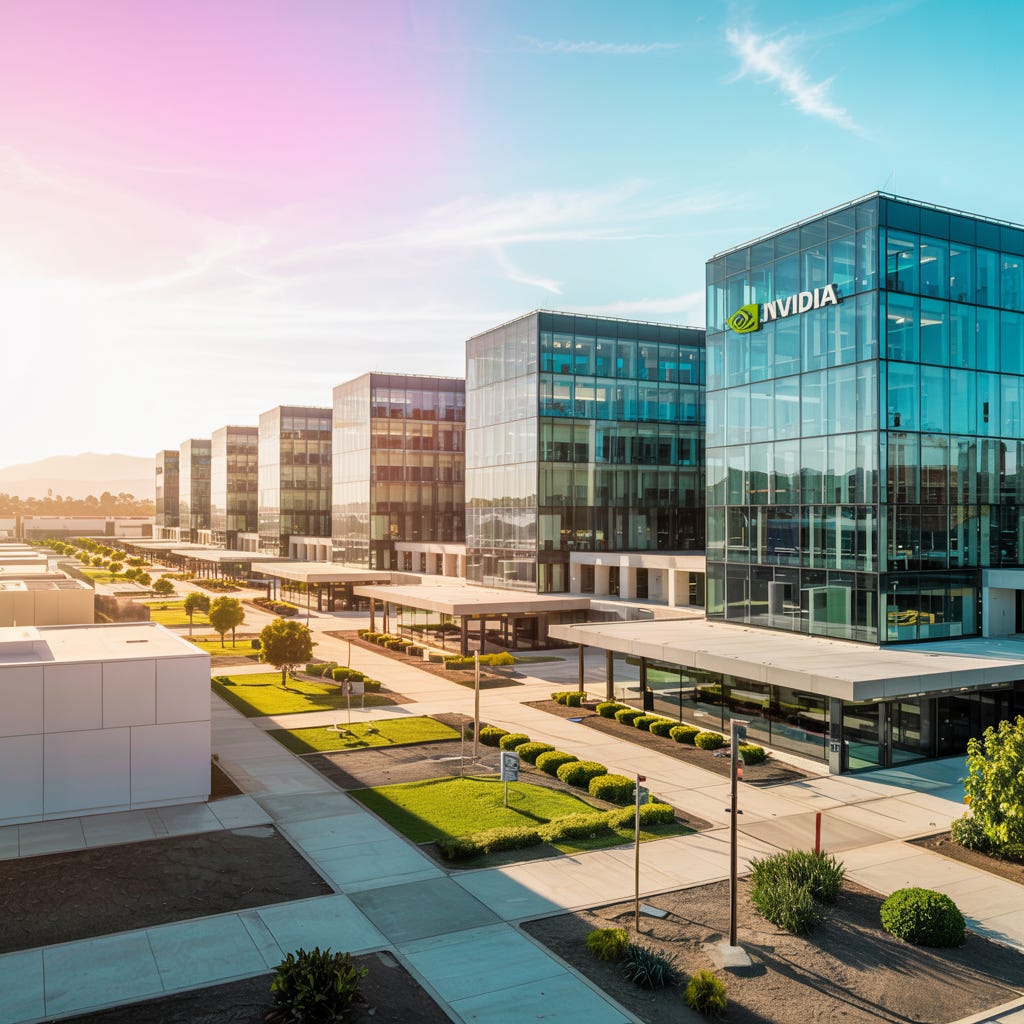NVIDIA Q2 FY26: Data Center Growth Faces Scrutiny Amid $60B Buyback
NVIDIA delivered $46.7B in revenue and guided Q3 to $54B, but concerns over Data Center momentum, China headwinds, and customer concentration are reshaping how investors view its AI dominance.
Welcome to Global Data Center Hub. Join investors, operators, and innovators reading to stay ahead of the latest trends in the data center sector in developed and emerging markets globally
NVIDIA’s latest quarter underscored its dominance in AI infrastructure and the challenges of living under a “perfection tax.”
Revenue surged 56% year-over-year to $46.7 billion, with Data Center sales hitting $41.1 billion and the Blackwell platform accelerating +17% sequentially.
Yet shares fell after-hours, as investors focused less on the beat and more on whether growth is already slowing.
The paradox is clear.
NVIDIA continues to set records, but even minor deviations from hyper-growth expectations spark volatility.
Earnings Breakdown & Infrastructure Strategy
Core Financials:
Revenue: $46.7B (+56% YoY, +6% QoQ)
Net Income: $26.4B (+59% YoY)
EPS: $1.08 GAAP, $1.05 non-GAAP
Free Cash Flow: $13.5B, pressured by taxes and inventory build
Segment Performance:
Data Center: $41.1B (+56% YoY, +5% QoQ)
Gaming & AI PC: $4.3B (+49% YoY)
Professional Visualization: $601M (+32% YoY)
Automotive & Robotics: $586M (+69% YoY)
Infrastructure & Capital Strategy:
Blackwell Ramp: +17% sequential growth, driving the Data Center transition
Networking Scale-Up: NVLink and Ethernet surged, validating NVIDIA’s full-stack approach
Inventory Build: $15B carried to support Blackwell Ultra
Capital Returns: $24.3B returned in H1, plus a new $60B buyback authorization approved in August
Data Center: Growth Engine Under Scrutiny
The Data Center business now accounts for nearly 90% of NVIDIA’s revenue, making it both the company’s greatest strength and the focal point of investor skepticism.
At $41.1B this quarter, the segment remains unmatched in scale.
But sequential growth of +5% marked a slowdown from the double-digit ramps that defined 2023–24.
For investors accustomed to uninterrupted surges, that was enough to trigger concern.
The reality is more complex:
Blackwell transition: Platform sales grew +17% sequentially, offsetting maturing Hopper demand and proving the generational handoff is working.
Networking strength: NVLink and Ethernet nearly doubled YoY, showing that bandwidth, not just GPU supply, is the bottleneck and NVIDIA controls both ends of the stack.
China exclusion: No H20 sales landed this quarter. Management quantified $2–5B of potential upside if export rules loosen, but left it out of guidance. That makes China a call option, not a core assumption.
Concentration risk: Two customers contributed ~39% of company revenue. That provides visibility but also heightens volatility if spending slows.
For skeptics, the numbers suggest demand might be peaking.
For operators and long-term investors, they read as a rebalancing with Blackwell, networking, and enterprise adoption positioning the Data Center business for a more sustainable growth curve.
Regional Growth Signals
North America & Europe: Hyperscaler CapEx remains strong, with networking adoption outpacing compute growth.
Asia-Pacific (ex-China): India and Southeast Asia absorbed redirected supply, reinforcing the region’s role as a demand stabilizer.
China: No H20 shipments this quarter; upside depends entirely on U.S. export policy.
Latin America & Emerging Markets: Indirect momentum via cloud providers, but growth remains hyperscaler-led.
Forecast & Strategic Close
NVIDIA guided Q3 to $54B, deliberately excluding China. The new $60B buyback shows management’s confidence but it also highlights the reality that valuation support may need both cash flow and narrative discipline.
The market takeaway:
Secular demand is intact, growth is moderating. +50% YoY at this scale is extraordinary, but the slope is flattening.
Blackwell is the hedge. Strong sequential ramp shows platform transitions can anchor growth even as prior cycles plateau.
China remains wild card. A sudden policy shift could swing billions back into the model.
Concentration is the real risk. Dependency on two customers magnifies volatility and underscores the need for enterprise and sovereign diversification.
Bottom line: NVIDIA is still the backbone of the AI economy, but the market is no longer rewarding strength alone.
Q2 FY26 marks a shift from “how big can it get” to “how durable is the growth.”
The winners (investors, operators, or policymakers) will be those who plan for volatility while building for the secular curve.

